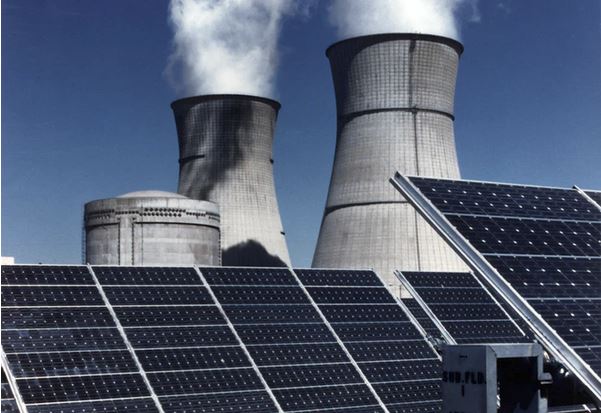Nuclear Power Is A Viable Option For Replacing Coal

Image Source: Unsplash
Over the past 15 years, the United States has undergone a significant transition away from coal-fired power plants. This transition is being driven by several factors, including environmental regulations, competition from natural gas, and the declining cost of renewable energy.
As coal-fired power plants are retired, there is a need for reliable and affordable zero-emission power replacements. To date, a large fraction of coal’s displacement has come from natural gas. Although it is cleaner than coal, natural gas is still a fossil fuel and therefore has associated greenhouse gas emissions.
Renewables sources like wind and solar power are scaling rapidly, but there are several challenges in using them to displace coal-fired power.
First, these sources tend to be decentralized and require a lot of area for the power they produce. Second, these sources are intermittent and therefore will require a lot more nameplate capacity to displace the same capacity from a coal-fired power plant. Certainly, these renewable sources will continue to grow in importance, but in the short-term, we can’t expect coal-fired power plants to be replaced with intermittent renewables.
However, nuclear power is a viable option for meeting this need. Nuclear power is a clean, dispatchable source of energy that can provide baseload power to the grid.
The report “Investigating Benefits and Challenges of Converting Retiring Coal Plants into Nuclear Plants” was released in 2022 by the U.S. Department of Energy. The report estimated that approximately 80% of retired or active coal plant sites in the United States are suitable to host advanced reactors smaller than the gigawatt scale.
The authors noted that converting coal plants to nuclear power could save money and reduce emissions. The report estimates that converting a coal plant to nuclear power could save the plant owner up to $1 billion over the lifetime of the plant, and that converting a coal plant to nuclear power could reduce emissions by up to 90%.
The International Energy Agency (IEA) published its own report on the potential for the displacement of coal-fired power in November 2022. The report, Coal in Net Zero Transitions, examines the role of coal in the global energy transition and identifies strategies for reducing coal-related emissions in a way that is rapid, secure, and people-centered.
The IEA report finds that coal is the largest emitter of energy-related carbon dioxide (CO2), accounting for 15 billion metric tons in 2021. Coal is also the largest source of electricity generation, accounting for 36% in 2021.
The report identifies three main pathways for reducing coal-related emissions:
- Rapid phase-out of unabated coal power: This pathway involves phasing out all coal power plants that do not capture and store their emissions by 2030. This pathway would require significant investment in clean energy technologies, but it would also deliver the largest emissions reductions in the shortest time.
- Gradual phase-out of unabated coal power: This pathway involves phasing out unabated coal power plants over a longer period, such as by 2040. This pathway would require less investment in clean energy technologies than the rapid phase-out pathway, but it would also deliver smaller emissions reductions.
- Continued use of coal with carbon capture and storage (CCS): This pathway involves using CCS technology to capture and store the emissions from coal power plants. CCS technology is still under development, but it has the potential to significantly reduce coal-related emissions.
The report finds that the rapid phase-out of unabated coal power is the most effective way to reduce coal-related emissions. Nuclear power is expected to play a key role in replacing coal-fired electricity generation. In the IEA’s Announced Pledges Scenario (APS), over 30 countries have shown interest in expanding nuclear capacity, with global capacity additions expected to average 18 GW annually from 2026 to 2030 triple the recent average of 6 GW from 2017 to 2021.
While China leads the market – accounting for almost 40% of all new nuclear capacity to 2030 — other countries such as France, India, Poland, the United Kingdom, and the United States have announced support or plans to invest in new nuclear projects. The APS expects an average of 20 GW of nuclear capacity to be added each year from 2030 through 2050, including small modular reactors that offer lower upfront costs and improved safety and waste management features.
There are certainly challenges and opportunities associated with converting coal plants to nuclear power. The biggest challenge is the cost and time to build new nuclear power plants. Some regulatory hurdles need to be overcome to convert coal plants to nuclear power. However, converting coal plants to nuclear power could help retain work forces at coal plants, stabilize the economy, while helping the United States meet its climate goals.
More By This Author:
Chevron’s Financial Discipline
Clean Energy Provisions In The Inflation Reduction Act Of 2022
Understanding Energy Independence In Two Charts
Follow Robert Rapier on Twitter, more



